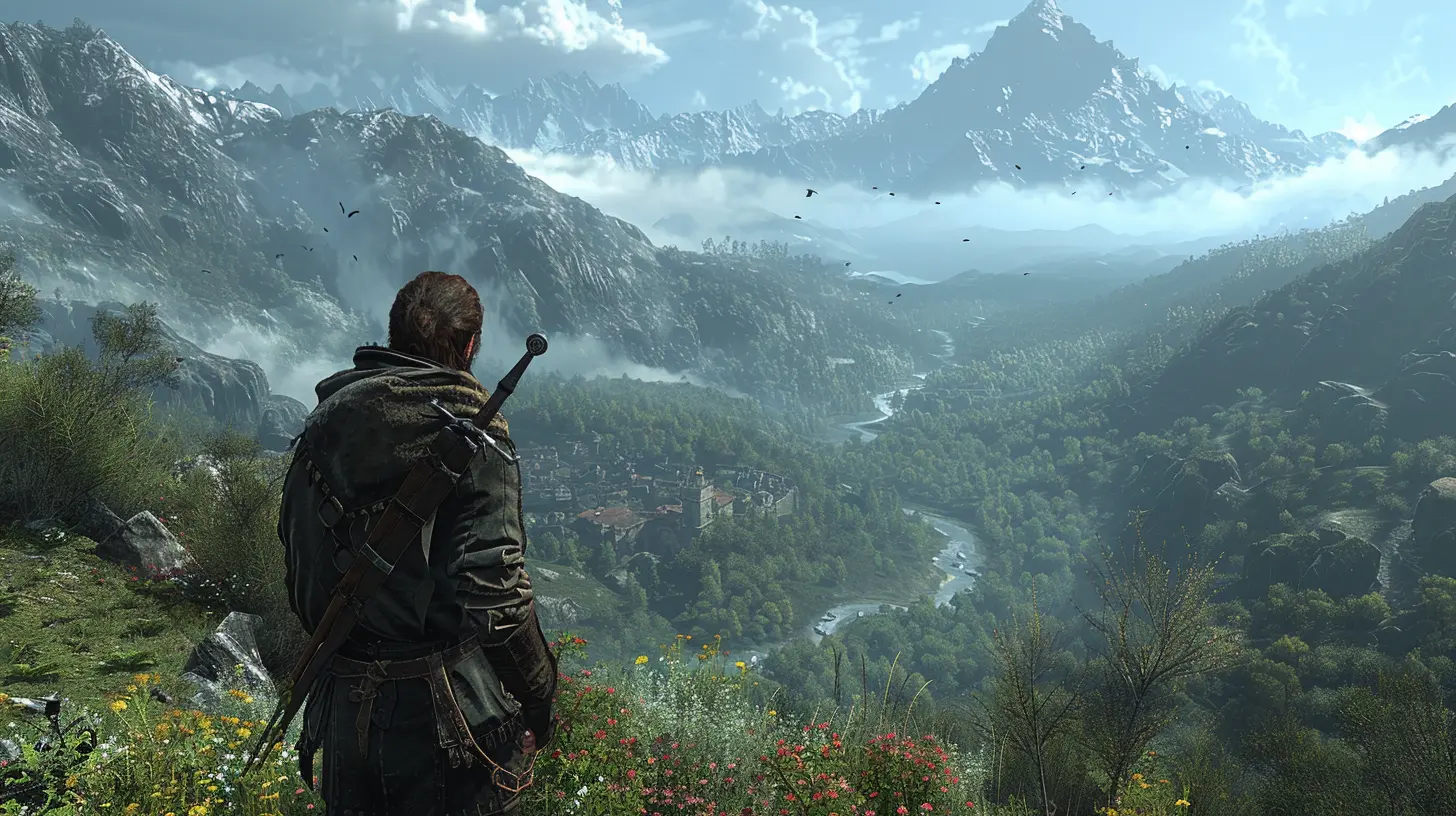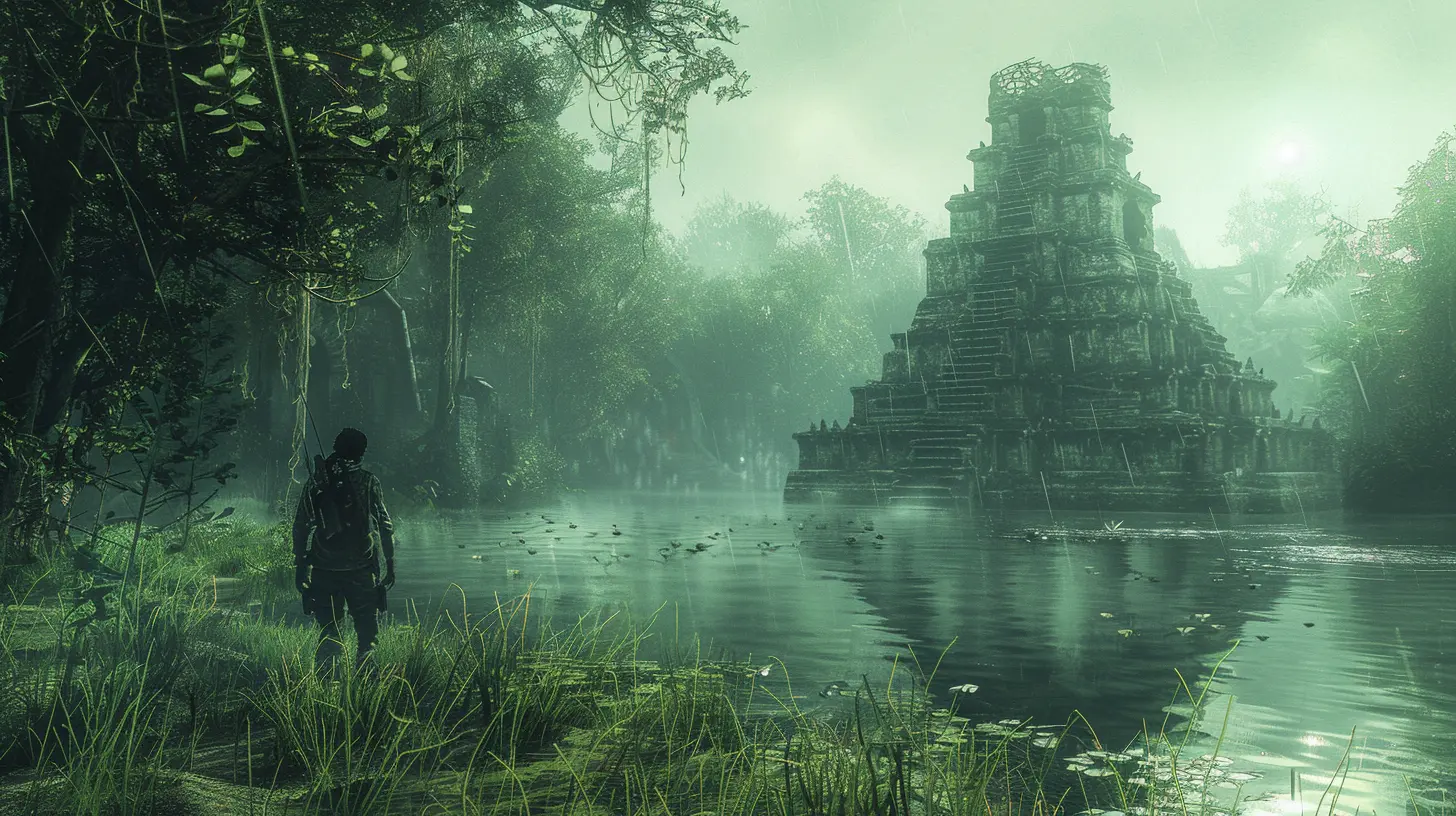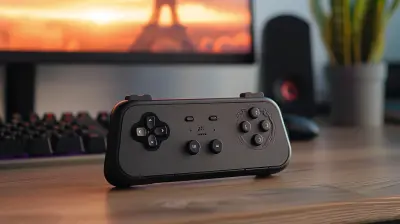What Makes a Remastered Game Truly Worth Playing
6 August 2025
Let’s be honest—we all love a good nostalgia trip. There’s nothing quite like firing up a game you adored 10 or 20 years ago, only now it looks sharper, runs smoother, and maybe (just maybe) doesn’t make you want to rip your hair out with convoluted controls or potato graphics. That’s where remastered games come in. But here’s the burning question: what makes a remastered game truly worth playing?
You’ve probably been burned before—got all hyped for that "definitive edition," only to find out it's the same old mechanics with a fresh coat of pixelated paint. So, let’s break it all down. This post dives headfirst into the guts of remastered games and asks: when is it a cash-grabbing nostalgia bomb, and when is it a beautifully polished, worthy replay?

First Things First: What Even Is a Remaster?
Before we go full gamer rant, let’s clarify the basics. A remastered game isn’t a remake. A remake is like tearing the house down and rebuilding it from scratch. A remaster is like flipping that old house with a new roof, fresh paint, and a fancy smart lock on the front door. The bones are the same, but it just looks and feels… better.Typically, remasters improve:
- Graphics (higher resolution, better textures)
- Sound (remastered audio, improved voice acting)
- Performance (higher frame rates, quicker load times)
- UI/UX enhancements (modern menus and controls)
But the soul of the game? That stays mostly untouched.
Now, let’s talk strategy—what separates a lazy cash grab from a remaster that deserves your hard-earned coins?

🎨 Visual Magic: More Than Just HD Wallpapers
Let’s not lie—half the fun of a remaster is seeing a beloved classic glow up like it just had a makeover montage in a teen movie. But visuals alone shouldn’t be the only selling point.A truly worthy remaster doesn’t just slap on HD shaders and call it a day. The best ones:
- Revamp character models with more detail (without messing with their iconic look, of course—don’t touch Cloud’s hair, we beg you)
- Upgrade lighting and shadows to breathe new life into old environments
- Improve animations so your character doesn’t move like a haunted marionette
When done right, visuals don’t just look better—they feel better. You get pulled back into the world quicker, and your rose-tinted memories become real again.

🎧 Audio That Doesn’t Sound Like It Was Recorded in Someone’s Basement
You ever go back to an old game and wonder if they recorded the dialogue in a tin can? Yeah, us too.A remaster worth playing pays attention to sound. Re-recorded music tracks, cleaned-up voice acting, and spatial audio can turn a stale scene into something goosebump-worthy. Trust me, hearing your favorite in-game tune with modern audio clarity is like hearing it for the first time all over again.
And for the love of the gaming gods—remasters that give us the option to toggle between original and updated audio are instant wins. Sometimes you just need that crunchy 16-bit sound.

🎮 Tweaked Controls: From Clunky to Comfy
No one wants tank controls in 2024—unless you're doing it ironically. So, control updates are crucial.Modern gamers expect smooth input and responsive movement. A remaster should tweak outdated control schemes to feel fresh while still keeping the gameplay authentic.
Think:
- Remapping options
- Sensitivity adjustments
- Better camera controls
- Native support for modern controllers
It’s like slipping on your old favorite hoodie—only someone fixed the zipper, and it has actual pockets now.
💾 Performance Upgrades: Load Times That Don’t Age You
This one’s huge. Many older games were epic, but dang—loading screens felt like they were giving you enough time to make a three-course meal.A proper remaster should:
- Cut down load times significantly
- Fix frame rate drops
- Reduce bugs and technical hiccups
- Run smoothly across current-gen hardware
Basically, it shouldn’t feel like punishment to play. If you’re waiting longer to load than to fight the boss, we’ve got a problem.
🧠 Quality of Life Improvements: Small Touches, Big Impact
You know what really wins gamers over? The little things.A health bar that’s easier to read, a minimap that actually makes sense, or a save system that doesn’t require arcane rituals—small QoL updates can totally transform a remaster.
Some of our favorite QoL improvements in standout remasters include:
- Autosave (because your memory card is now long gone)
- Skippable cutscenes (especially if you’ve already seen them a thousand times)
- Modern difficulty options
- Accessibility features (subtitles, colorblind modes, etc.)
These changes don't disrupt gameplay—they enhance it, making your return to a classic feel like coming home... to a way better-looking, more functional home.
🧳 Respecting the Original: Don’t Mess with the Magic
Here's where things get tricky. A remaster must walk a tightrope—it has to modernize without murdering the original’s soul.You fell in love with that game once upon a time. You don’t want a totally new experience; you want the same game, just better. This means:
- Don’t rewrite the storyline unless it was absolutely broken
- Don’t redesign characters beyond recognition
- Don’t change the tone or theme
A good remaster respects what made the game iconic in the first place. It’s a celebration, not a reinvention.
👥 Community Love and Fan Feedback
A remaster that listens to the community? Chef’s kiss.Some of the best recent remasters have included fixes or enhancements that fans have been begging for—stuff developers missed back in the day or couldn’t include due to technology limits.
Games that include mod support, fan-sourced bug fixes, or even nods to community-built content show a level of respect to the fanbase that instantly boosts a remaster’s worth.
After all, if you’re going to dig up a classic, why not give fans what they’ve always wanted?
🎁 Extra Goodies: Bonus Content FTW
A remaster that throws in a few extra goodies? Now you’re speaking our language.Bonus content can include:
- Unreleased concept art
- Behind-the-scenes videos
- Developer commentary
- Added side quests
- Alternate endings
- Legacy versions included in the package
These additions are more than just fluff—they’re love letters to fans. They turn a good remaster into an unforgettable one.
🚫 When NOT to Bother with a Remaster
Alright, not all that glitters is Gwent (or gold, whatever). Sometimes, a remastered game just isn’t worth it. Here’s when you might wanna skip:- The visuals are barely improved
- No significant gameplay tweaks
- It runs worse than the original (how does that even happen?!)
- It’s packed full of bugs
- It lacks any bonus content or quality-of-life additions
- It’s priced like a brand-new game with zero justification
Basically, if it feels rushed or lazy, it probably is. Save your coins.
🕹️ Some Stellar Examples That Set the Bar
Let’s name-drop a few remasters that nailed it:- 🎮 Crash Bandicoot N. Sane Trilogy: Beautiful visuals, tight controls, and bundles of nostalgia.
- 🎮 Tony Hawk’s Pro Skater 1 + 2: Perfect blend of old school vibes with modern gameplay mechanics.
- 🎮 Mass Effect Legendary Edition: Fixed old bugs, upgraded the graphics, and gave ME1 the polish it desperately needed.
- 🎮 Halo: The Master Chief Collection: Basically a museum of glory for Halo fans.
These weren’t just quick cash-ins—they were thoughtful, detailed, and genuinely enjoyable in today’s gaming climate.
🧠 Final Thoughts: The Remastered Litmus Test
So, what makes a remastered game truly worth playing?Simple. It must hit that sweet spot between honoring the original and improving it where it matters. It’s about preserving that magic but scrubbing off the outdated grime.
Ask yourself these questions before diving in:
- Does it improve visuals and audio significantly?
- Did they update controls and fix gameplay quirks?
- Are there meaningful QoL changes?
- Does it respect the story and vibe?
- Did they add anything new or exciting?
- Does the community vibe with it?
If most of those answers are “heck yeah!”—you’re probably looking at a remaster worth your time.
In the end, games are like memories. A great remaster doesn’t just restore pixels and polygons—it brings those memories to life, shinier and bolder than ever.
So fire up that controller, charge your nostalgia battery, and get ready to jump back in. Just make sure the remaster you choose honors what made you fall in love with the original in the first place.
all images in this post were generated using AI tools
Category:
Remastered GamesAuthor:

Brianna Reyes
Discussion
rate this article
1 comments
Hadley Reese
Remasters should breathe new life, not just polish old graphics. If I’m paying for nostalgia, at least give me a reason to feel like I’m experiencing it anew—think fresh mechanics, enhanced storytelling, or at least a reason to dust off my old gaming chair!
September 2, 2025 at 3:45 AM

Brianna Reyes
I completely agree! A true remaster should offer innovative gameplay elements and enriched narratives that elevate the original experience, rather than just a visual upgrade.


